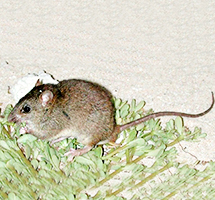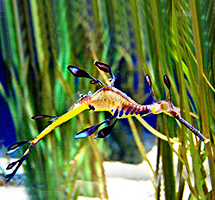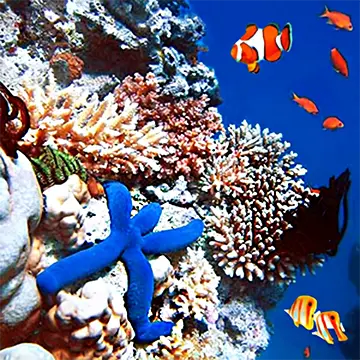
Coral Reef Animals List
The Great Barrier Reef is the largest coral reef in the world and home to more than 8,105 species of marine animals. These include over 1,625 species of fish and 360 types of coral. It is also home to a variety of other creatures such as sea stars, sea urchins, sharks, rays, dolphins, dugongs, and numerous species of crustaceans and invertebrates. The reef's ecosystem is crucial as it serves as a feeding ground for migratory species such as humpback whales and sea-birds. Additionally, the reef is a breeding ground for several species of turtles, including the green sea turtle and the loggerhead turtle.
Coral Reef
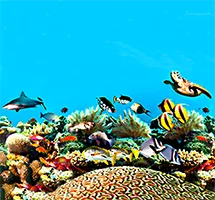
A coral reef is made up of billions of coral polyps with hard, tubular limestone cases with tentacles around their mouth for feeding.
Lean More about Coral ReefsShark
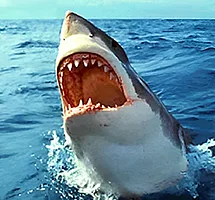
Sharks are found around Australia. Most are harmless. Shark attacks are wildly publicised, but they are very rare. There are 182 species of sharks.
Lean More about SharksBox Jellyfish
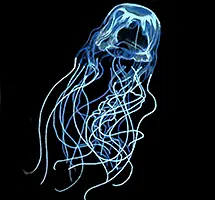
Box Jellyfish with dangling tentacles up to two meters long are the most venomous animals in the world. A sting can lead to death in a few minutes.
Lean More about Box JellyfishClownfish
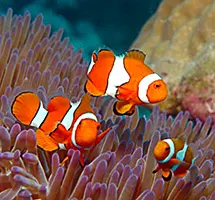
Made famous in the movie “Finding Nemo” clownfish live amongst sea anemones. They are born male but can morph into females.
Lean More about ClownfishStone Fish
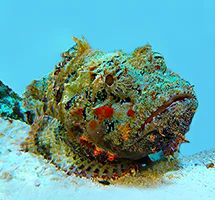
The Stone Fish is the most venomous fish in the world. Spines along its dorsal fin can inject a highly toxic and intensely painful venom.
Lean More about Stone FishCuttlefish
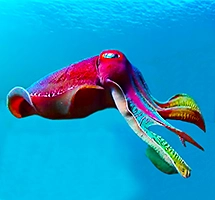
Cuttlefish give vivid and colourful displays. They are related to squid and octopuses. Cuttlefish are believed to be very intelligent creatures.
Lean More about CuttlefishMimic Octopus
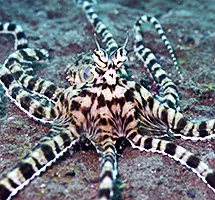
The mimic octopus is a master of disguises. It can change its appearance to imitate many dangerous sea creatures to frighten predators away.
Lean More about Mimic OctopusesDugong
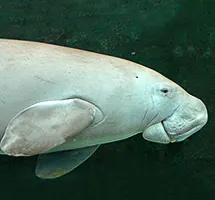
Dugongs are plant-eating marine mammals. Because of their sleek appearance and large teats, ancient sailors thought they were mermaids.
Lean More about DugongsSea Anemone
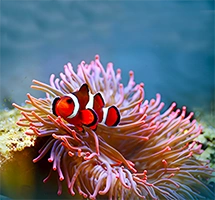
Sea anemones are carnivorous animals that look almost like plants, catching prey that come within reach of their tentacles.
Lean More about Sea AnemonesBrain Coral
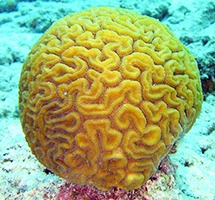
So called because its surface is creased with ridges like a human brain, it feeds on small drifting animals. It lacks a solid skeleton.
Lean More about Brain CoralsGiant Clam
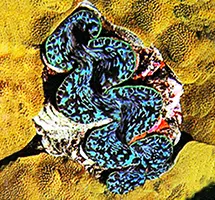
Giant clams can grow up to 1.5 meters and weigh 230 kilos. They have large protruding brilliant blue iridescent lips.
Lean More about Giant ClamsMagnificent Sea Anemone
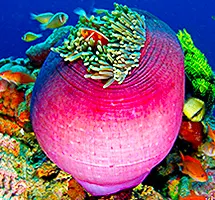
A sea anemone can grow to a meter in diameter. It is carnivorous, catching prey that come within reach of its tentacles.
Lean More about Sea AnemoneCoral Polyp
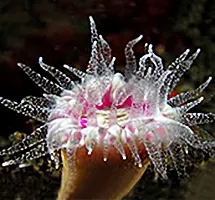
Coral polyps are small soft-bodied creatures with limestone skeletons that build coral reefs. It has a tubular body with tentacles surrounding its mouth.
Lean More about Coral PolypsCrocodile
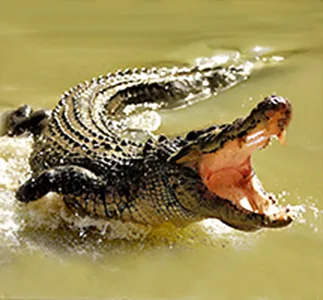
Saltwater Crocodiles are one of the most ferocious animals in the world. They live in the rivers and estuaries around the reef. Some even venture out to into the sea.
Lean More about CrocodilesFan Coral
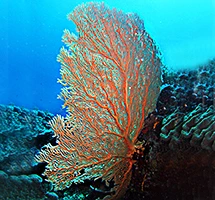
A type of soft corals that anchor themselves in sand or mud instead of hard surfaces. They are nocturnal, only extending their polyps at night time.
Lean More about Fan CoralsSquid
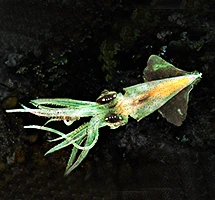
Squids are soft-bodied molluscs related to octopus and cuttlefish. They move through the water backwards and are one of the smartest invertebrates.
Mandarin Fish
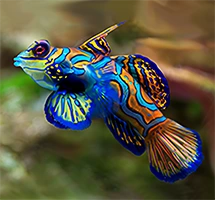
The beautiful mandarin fish has no scales for protection. Instead, it is covered in smelly toxic mucus and spines to deter predators.
grouper
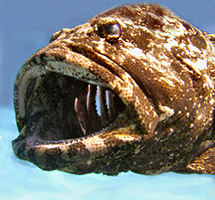
The giant grouper, with its huge mouth, is the largest bony fish in the barrier reef. It can grow to 2.5 meters and weigh 360 kgs.
Sting Ray
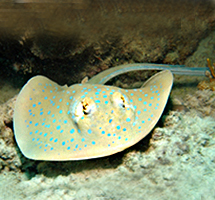
Stingrays are flat-bodied fish related to sharks. They eat snails, molluscs, fish, and other small creatures. Their long poisonous barbed tail.
Star Fish
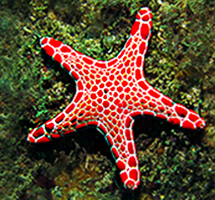
Star fish typically have five arms. They can regenerate lost limbs. They have no brain or blood and use seawater to pump nutrients through their bodies.
Moray Eel
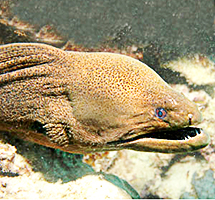
Moray eels are fish with long slender snake-like bodies with a large set of jaws. It hides in crevices and attacks prey that pass by.
Leatherback Turtle
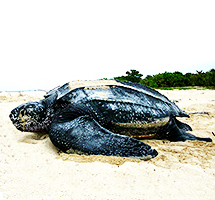
It is the largest turtle of them all. It is called a leatherback because it doesn't have a hard shell but has leathery skin instead.
Hermit Crab
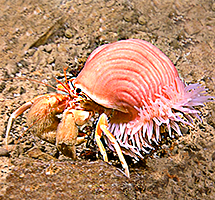
Hermit crabs wear other creatures' shells for protection and change shells when they outgrow them. This crab has attached venomous anemones.
Manta Ray
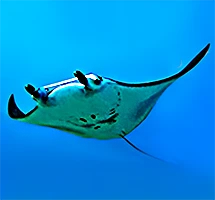
The manta ray is a flat saucer-shaped fish related to sharks. It is a filter feeder that eats plankton. Its barbed tail is not venomous.
Humphead Wrasse
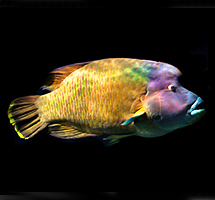
Also known as the Napoleon Fish, this carnivorous fish eat other fish, sea stars, sea urchins and crabs. They can grow to two metres and weigh 190kg.
Textile Cone
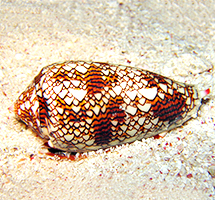
The Textile Cone's harpoon-like tooth can pierce the skin, rubber gloves and wetsuits. Its venom causes respiratory paralysis and eventual death
Blue-Ringed Octopus
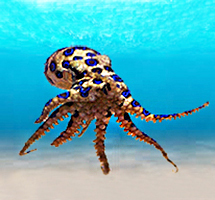
Blue-ringed octopods are venomous marine animals. They are related to squid and cuttlefish and change colours to suit their environment.
Crown of Thorns Starfish
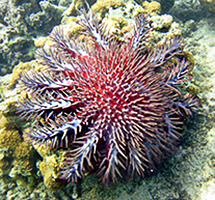
These multi-armed starfish, with venomous spines, feed on hard coral. Sometimes they grow to plague proportions devastating coral.
Sea Slug
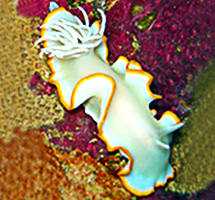
Sea slugs come in all shapes, colours, and sizes and are usually translucent. Their bright colours are a warning to predators that they are poisonous.
Loggerhead Turtle
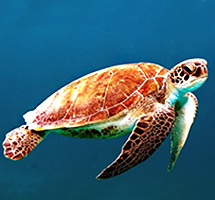
This turtle is the largest hard-shelled turtle in the world. It feeds on shellfish, crabs, sea urchins, and jellyfish. They are known to travel vast distances.
Green Turtle
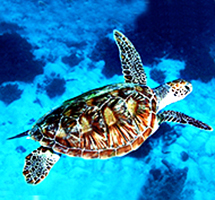
Green turtles feed mostly on seagrasses but they also eat venomous box jellyfish. It gets its name from the colour of its fat.
Peacock Mantis Shrimp
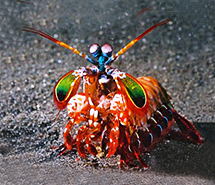
The peacock mantis shrimp has the fastest punch in the world, creating small implosions in the water that generates heat, light, and sound.
Boxer Crab
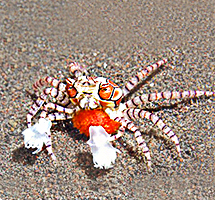
The boxer crab has a very creative way of protecting itself. It attaches two sea anemones to its claws and waves it about the scare off predators.
Nautilus
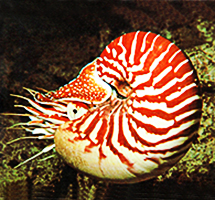
The nautilus is related to the octopus. It moves by shooting out a stream of water through a siphon. The nautilus catches its prey with 90 long tentacles.
Whale
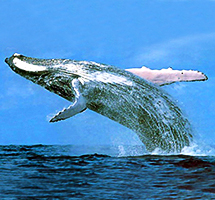
Humpback whales are air-breathing mammals that travel up from the Antarctic. They can grow to 12 – 16 metres and weigh around 36,000 kgs.
Sea Urchin
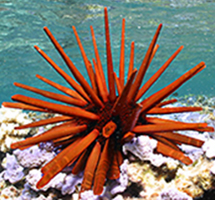
Sea urchins are non-aggressive and covered in venomous spines. They use their five-pairs of feet with suckers for movement and adhesion.
Lion Fish
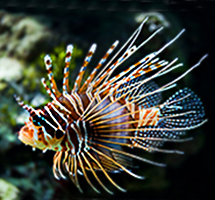
A fish with zebra-like stripes and venomous spines, a sting from a spine can be very painful but not fatal to humans.
Dolphin
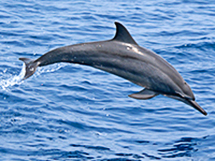
Dolphins are air-breathing mammals related to whales. They are very vocal and playful. They feed on invertebrates, fish, and squid.
Parrot Fish
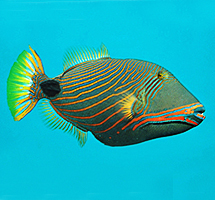
Parrot fish are so named because they have front teeth that are fused and look somewhat like to beak of a parrot. They use these teeth to rip off pieces of coral.
Banded Coral Sea Snake
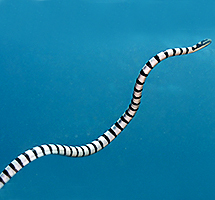
These very venomous snakes swim underwater but still need to surface to breathe. They are excellent swimmers and divers.
Jellyfish
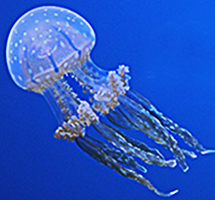
There are more than 100 species of jellyfish on the Great Barrier Reef. Only a few are fatal to humans. They use their long tentacles to catch prey.
Types of Animals in The Great Barrier Reef Great Barrier Reef Species Diversity
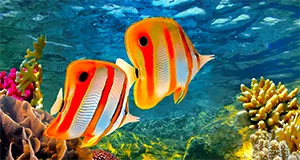
The Great Barrier Reef has the world's most diverse range of underwater animals including:
• 1,625 species of fish.
• 360 types of coral.
• 3,000 types of molluscs (like giant clams and the sea slug).
• 215 species of birds.
• 14 species of sea snake.
• 6 out of the world's 7 species of sea turtle (all listed as threatened).
• 630 species of echinoderm ( starfish, sea urchins).
• 30 species of cetaceans (whales and dolphins).
• 22 species of sea birds and 32 species of shorebirds.
• 30 species of dolphins and whales.
• 133 species of sharks and rays.
• 1,300 species of crustaceans (crabs, prawns).
• 450 species of hard coral.
• 40 species of sea anemones.
• 150 species of soft coral and sea pens.
• 100 jelly fish (blue bottle, box jellyfish).
• sponges.
• crocodiles.
